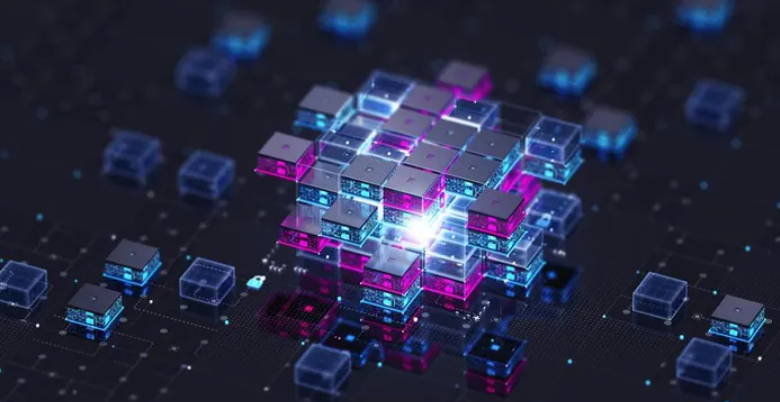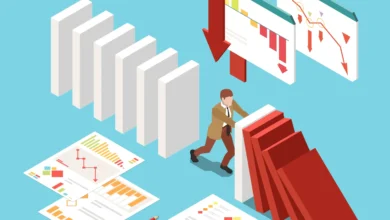2025 Web3 Trend Forecast: What the Future Holds for Blockchain and Decentralization

Web3 is revolutionizing how we interact with digital platforms, shifting the control from centralized entities to individuals. With blockchain at the core of this movement, decentralized technologies are poised to reshape industries in 2025. This article explores the Web3 trend forecast, diving deep into the technologies and innovations set to define the future of blockchain and decentralization.
What Is Web3? Understanding the Foundation of the Future Internet
Web3 represents the third generation of the internet, promising to revolutionize how we interact with online platforms. Unlike Web2, which is dominated by centralized entities such as Google, Facebook, and Amazon, Web3 focuses on decentralization. At its core, Web3 aims to give users control over their data, identity, and transactions, using blockchain technology to create trustless environments.
- Key Components of Web3:
- Decentralized Networks: Peer-to-peer protocols eliminate the need for intermediaries.
- Blockchain: Provides the transparency and immutability that Web3 relies on.
- Smart Contracts: Automate and secure agreements without the need for central authority.
With these principles in mind, the forecast for Web3 in 2025 is filled with exciting potential.
2025 Web3 Trend Forecast: Key Predictions
1. Blockchain Integration Across Industries
By 2025, blockchain technology will be integrated into more industries beyond cryptocurrency and finance. Industries such as healthcare, supply chain management, and entertainment will increasingly adopt decentralized systems for their transparency, security, and efficiency.
Healthcare
- Blockchain’s immutability ensures secure patient records and protects sensitive data from breaches.
- Decentralized platforms can allow patients to have control over their medical data and share it with healthcare providers securely.
Supply Chain
- Blockchain’s ability to track products from source to consumer will be crucial in ensuring transparency and accountability in supply chains.
- Decentralized systems will streamline operations, reduce fraud, and improve trust across the supply chain.
2. Decentralized Finance (DeFi) Continues to Evolve
Decentralized finance (DeFi) has already made waves, but in 2025, it will likely experience exponential growth. DeFi eliminates the need for traditional banks and financial intermediaries by utilizing smart contracts on blockchain networks.
- Mainstream Adoption: Major banks and financial institutions will likely incorporate DeFi elements to remain competitive.
- DeFi Insurance and Lending: We will see the development of new DeFi insurance platforms and decentralized lending protocols that are as secure and reliable as traditional financial products.
3. Web3 and the Metaverse: Creating Immersive Decentralized Worlds
The Metaverse is poised to become a significant part of Web3. By 2025, expect more immersive virtual worlds that allow users to create, buy, and sell digital assets in a fully decentralized ecosystem.
- Virtual Real Estate: Virtual land will be bought, sold, and developed through blockchain platforms, with ownership records stored immutably.
- NFTs in the Metaverse: NFTs (Non-Fungible Tokens) will play a central role in the Metaverse, allowing individuals to own unique assets, art, and even real estate within virtual spaces.
4. Blockchain Interoperability: Breaking Down Silos
One of the significant barriers Web3 faces today is the fragmentation of blockchain ecosystems. In 2025, we can expect a surge in cross-chain compatibility, enabling different blockchain networks to communicate with each other seamlessly.
- Bridging Networks: Cross-chain bridges will facilitate the movement of assets between different blockchain platforms.
- DeFi Interoperability: As decentralized finance grows, so will the demand for DeFi protocols to work across multiple blockchain networks.
5. Privacy and Security Enhancements
As more people embrace Web3 technologies, the need for enhanced privacy and security will become paramount. Web3 will offer more privacy-preserving features than traditional Web2, where users are often subject to surveillance and data mining by centralized entities.
- Zero-Knowledge Proofs: These cryptographic methods will allow users to prove their identity or transaction data without revealing sensitive information, offering enhanced privacy and security.
- Self-Sovereign Identity: Web3 will allow users to own their identity through decentralized digital IDs, which they can use securely across platforms without relying on centralized authorities.
6. DAOs (Decentralized Autonomous Organizations) Redefining Governance
DAOs will play a critical role in the future of Web3. By 2025, they will provide new models of governance, enabling decentralized decision-making processes in various sectors.
- Community-Driven Organizations: DAOs will allow decentralized communities to govern themselves, from financial projects to social networks and even entire organizations.
- Tokenized Governance: Through token-based voting mechanisms, DAOs will make it easier for people to participate in governance and control the direction of Web3 projects.
7. Decentralized Social Media Platforms Rising
In 2025, we will witness the rise of decentralized social media platforms, powered by blockchain, that offer users more control over their data and digital content.
- Censorship Resistance: By removing centralized authorities, these platforms will prevent censorship, giving users a voice without fear of interference.
- Monetization of Content: Creators will have direct control over how they monetize their content, thanks to smart contracts and decentralized applications (dApps).
Challenges Facing Web3 in 2025
Despite the promising advancements, Web3 faces several challenges that could hinder its widespread adoption.
1. Scalability Issues
As more applications move to decentralized networks, scalability will continue to be a critical issue. Although solutions like sharding and Layer 2 protocols are being developed, achieving mainstream scalability will still take time.
2. Regulatory Uncertainty
Regulatory frameworks for blockchain technologies and cryptocurrencies remain unclear in many regions. As Web3 grows, regulatory bodies will need to create laws that encourage innovation while protecting users.
3. User Adoption
While blockchain and decentralization are revolutionary, many users may still struggle with the technical aspects of Web3. User-friendly interfaces and educational efforts will be essential for broader adoption.
Web3 in 2025: The Future is Decentralized
The future of Web3 is undeniably exciting, with decentralization becoming a driving force in the technological and digital landscape. As blockchain technology matures and decentralized applications gain traction, we can expect a more secure, transparent, and user-centric internet. By 2025, Web3 will not just be an emerging concept; it will be a defining feature of the digital world.
FAQs
1. What is Web3 and how is it different from Web2?
Web3 is the third generation of the internet, focusing on decentralization, blockchain, and user control over data. Web2, in contrast, relies on centralized platforms controlled by major corporations.
2. How will blockchain impact industries beyond finance?
Blockchain will be used to enhance transparency, security, and efficiency in industries like healthcare, supply chain management, and entertainment.
3. What role will NFTs play in the Metaverse?
NFTs will allow users to own unique digital assets such as virtual land, art, and collectibles, making them integral to the Metaverse’s economy.
4. What is the role of DAOs in Web3?
DAOs are decentralized organizations that allow community-driven decision-making processes, offering new governance models across industries and projects.
5. Will decentralized social media platforms replace current ones?
Decentralized social media platforms will offer users more control over their data and content, providing a viable alternative to traditional, centralized platforms.
6. What challenges does Web3 face in 2025?
Scalability, regulatory uncertainty, and user adoption are key challenges that could hinder Web3’s widespread adoption by 2025.
Conclusion: Embracing a Decentralized Future
Web3 represents the next frontier of the internet, where decentralization, blockchain, and smart contracts offer innovative solutions to traditional online systems. As we look towards 2025, the advancements in blockchain, DeFi, the Metaverse, DAOs, and decentralized social platforms will likely reshape our digital lives. Although challenges remain, the future of Web3 is full of promise, with more individuals and industries embracing the decentralized revolution.




